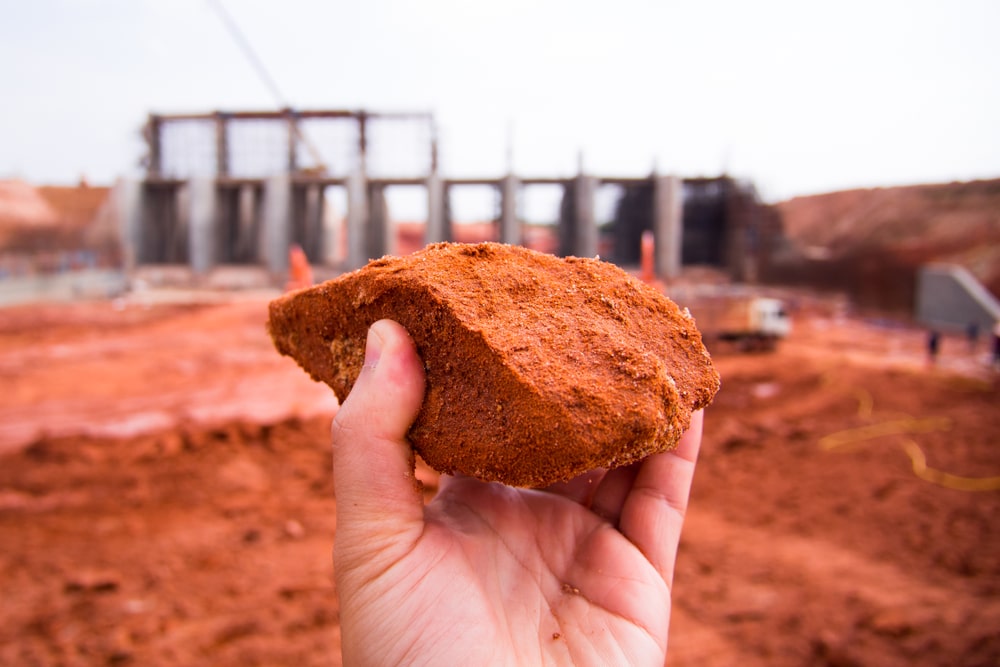Geotechnical Geologist Solutions for Accurate Dirt and Rock Evaluation
Geotechnical Geologist Solutions for Accurate Dirt and Rock Evaluation
Blog Article
Exactly How Consulting Engineers Enhance Geotechnical Engineering Projects: Insights Into Their Competence, Techniques, and Collaborative Approaches
Consulting designers are pivotal in boosting geotechnical design projects, using their specialized knowledge to browse the intricacies of subsurface conditions. Their methodologies incorporate a variety of site investigation methods, including Criterion Infiltration Tests (SPT) and Cone Infiltration Tests (CPT), which notify important decisions throughout the style and construction phases. Furthermore, their joint techniques foster communication amongst diverse task stakeholders, ultimately forming the task's trajectory. As we take a look at the multifaceted functions these professionals play, it ends up being clear that their payments prolong past technical know-how, prompting a better look at the ramifications for task success.
Role of Consulting Engineers
The experience of speaking with designers in geotechnical design is fundamental to the successful execution of building tasks. These professionals play a crucial role in assessing soil and rock properties, which are essential aspects affecting layout and construction decisions. By conducting extensive website investigations, speaking with designers gather necessary information that educates the design process, guaranteeing jobs are developed on steady and appropriate ground.
Consulting engineers likewise supply very useful understandings right into threat monitoring (geotechnical geologist). They recognize prospective geotechnical risks, such as landslides, dirt liquefaction, and settlement concerns, making it possible for stakeholders to apply effective reduction techniques. Their know-how help in enhancing foundation designs, which can result in considerable cost savings and boosted safety and security
Moreover, getting in touch with designers offer as a crucial link between task owners, architects, and professionals. Their capability to translate intricate geotechnical data into workable suggestions promotes partnership and helps with educated decision-making throughout the job lifecycle. This multidisciplinary method not just improves job effectiveness but additionally guarantees compliance with regulative standards and ideal methods.
Trick Methodologies in Geotechnical Design

One key technique is site examination, which involves conducting field tests and lab evaluations to collect information on subsurface conditions. Methods such as Requirement Infiltration Screening (SPT) and Cone Infiltration Screening (CPT) are widely used to review dirt stratigraphy and toughness. Additionally, geophysical methods, including seismic and electrical resistivity surveys, supply non-invasive methods to analyze subsurface characteristics.
Another important technique is mathematical modeling, which makes it possible for designers to simulate various scenarios and predict how soil-structure communications will certainly behave under different loading conditions. Finite Element Evaluation (FEA) is an usual strategy used in this context.
Moreover, the design of structures, preserving frameworks, and earthworks depends heavily on these approaches - geotechnical geologist. By integrating sophisticated analytical devices with area data, seeking advice from engineers This Site can develop tailored solutions that address details job difficulties, ultimately adding to the security and safety of building and construction tasks
Value of Soil Evaluation
Dirt analysis functions as a fundamental aspect in geotechnical design, offering important understandings into the physical and chemical residential properties of soil needed for effective building and construction planning. Recognizing dirt characteristics is critical for establishing its load-bearing capability, water drainage behavior, and possibility for settlement or instability. Comprehensive soil investigations, including tasting and research laboratory testing, aid determine criteria such as soil type, wetness content, thickness, and shear toughness.
These analyses notify the option of appropriate building and construction strategies and materials, eventually affecting project safety and durability. Cohesive soils may need various structure styles contrasted to granular dirts, demanding customized engineering services. Moreover, soil analysis aids in identifying pollutants that might posture risks to human health or the atmosphere, permitting the advancement of mitigation approaches.
Integrating dirt analysis into the beginning of project development helps to minimize unexpected difficulties, guaranteeing that engineers can anticipate and attend to prospective problems before they escalate. By developing a thorough understanding of the site conditions, seeking advice from engineers can optimize design performance and minimize expenses, thus enhancing the overall success of geotechnical design jobs.
Collective Approaches in Tasks
Effective geotechnical projects usually rest on collective methods that bring together varied experience from different disciplines. Efficient collaboration amongst seeking advice from engineers, rock hounds, environmental researchers, and building specialists is essential for addressing complex difficulties and optimizing job results. By leveraging Read Full Article the one-of-a-kind abilities and knowledge of each staff member, tasks can take advantage of an all natural understanding of the site problems, regulatory demands, and design restrictions.
Normal communication and interdisciplinary conferences facilitate the sharing of understandings and cultivate a culture of team effort. These collaborative efforts make it possible for the identification of prospective risks early in the job lifecycle, permitting timely mitigation approaches. In addition, integrating responses from stakeholders, including regional neighborhoods and governing agencies, makes sure that all perspectives are considered, improving task approval and compliance.
In addition, the integration of sophisticated modern technologies, such as Geographic Details Solution (GIS) and Building Information Modeling (BIM), further improves partnership. These tools permit the real-time sharing of information and visualization of geotechnical conditions, promoting notified decision-making. Inevitably, a collaborative technique not just streamlines job implementation yet additionally lays the structure for innovative services to complex geotechnical engineering difficulties.
Effect on Job Outcomes

Consulting designers employ innovative approaches such as threat evaluation and other anticipating modeling, which enhance the precision of project projections. Their ability to integrate cutting-edge innovations, like geotechnical instrumentation and information analytics, even more fine-tunes the layout and building processes. Therefore, tasks experience improved performance, reduced costs, and reduced hold-ups.
Additionally, fostering efficient interaction and collaboration among team participants enhances analytical capacities. When challenges occur, a joined front allows for swift recognition of services, protecting against potential problems. Inevitably, the joint efforts of seeking advice from engineers add to greater top quality outcomes, guaranteeing that jobs satisfy both governing criteria and client expectations.
Final Thought

Report this page